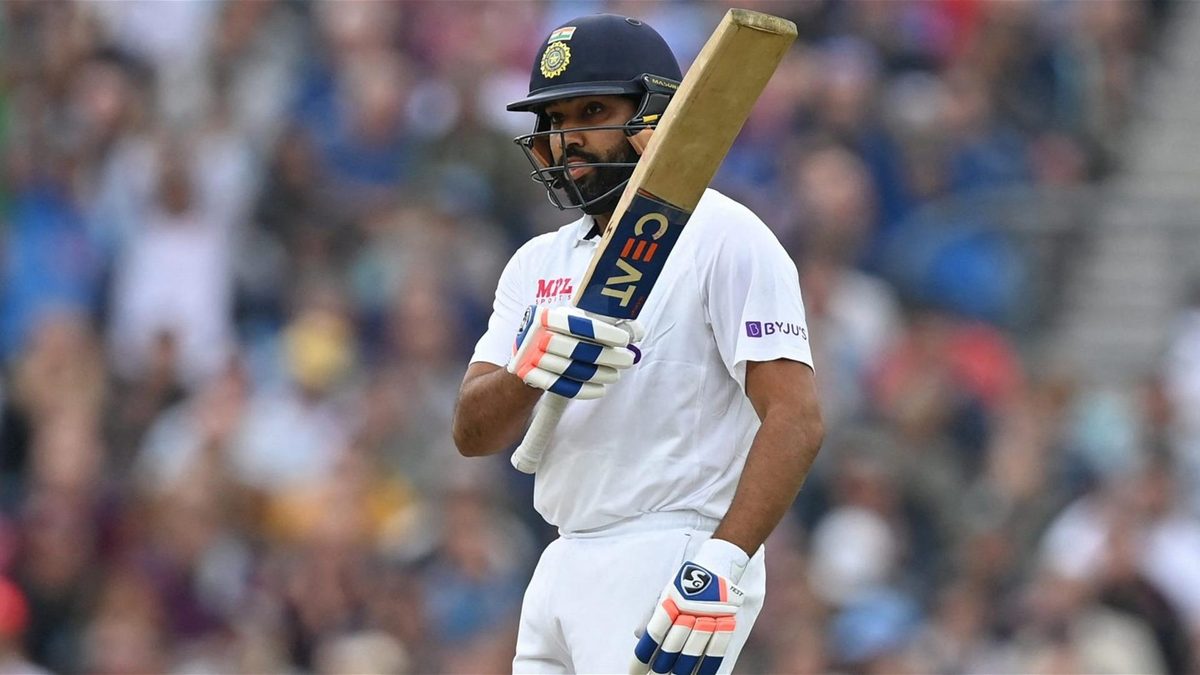
After conquering white-ball cricket, Rohit Sharma is continuing his path to ascension after a delayed return in Tests, writes Sarah Waris.
After Rohit Sharma went for a pull only to get the timing completely wrong in the second innings at The Oval, social media was abuzz with how the opener was unable to curb his instincts against the short ball as he was dismissed on the very first delivery after the new ball had been taken. Considering India’s repeated woes with the second new ball, Rohit was expected to continue his patient innings and take India to safety on day three. Instead, some felt he had left the door ajar for England to make further inroads.
As he walked back, you could get a hint of the devastation as Rohit raised his bat almost unwillingly, appreciating the crowd’s vociferous applause. It was his fourth dismissal in a similar manner this series, but his ‘brain fade’ will not and should not allow us to overlook his transformation as a Test batsman in conditions he was not expected to succeed in. It was his first Test ton overseas, and eighth overall, and as he got to the milestone with a huge six, you could almost sense that Rohit the white-ball rockstar had taken over. It was only the fourth time this century that an India opener had scored a ton in Tests in England: a feat worth cherishing for Rohit, a player whose career was almost echoing Yuvraj Singh’s at one point.
A lot has been spoken about Rohit’s start in the format, his subsequent decline, and his struggles against the moving ball. His average of 25.33 outside Asia until 2020 only proved his shortcomings, and if not for MSK Prasad’s suggestion to have an experienced opener in the Test side at home in 2019 following Rohit’s successful 2019 World Cup campaign, the Mumbai player’s career in the format would have been an antithesis of his highly successful white-ball version.
His success overseas since has surprised many, and though he was often guilty of throwing away his starts — Rohit’s away average was just over 32 at the top till his dismissal in the first innings at Edgbaston — he remained the assured presence who would see off the new ball match after match since the Australia tour.
From the start of 2020 until his dismissal at Edgbaston, he was India’s second-highest run-getter in Tests. He had played at least 60 balls in six of his seven innings as an opener away from home but had made a habit of getting himself out after getting set. He had just one fifty to show for in the interim, along with just one knock of 100+ deliveries. ‘Brain fade’ moments were plenty as he was often guilty of tame dismissals, but his last few innings in England have seen him play with more patience.
Since the game at Nottingham, Rohit has batted six times and has faced 100+ balls on four occasions, including facing 150+ balls twice. He has been batting with softer hands, with a lower backlift, is playing with caution, is circumspect under tough conditions, and has bettered his art of negating swing and seam. His head is more still: a result of a tighter balance on the front foot that removes the LBW from the equation.
At The Oval, he was greeted with England bowling an extremely tight line in the second innings. He did not attack the good balls, waited for the bowlers to err, and got going with a gorgeous drive off a wide half-volley sent down by Ollie Robinson. His fifty came in 145 deliveries, with his second fifty taking just 59 more balls. It was an indication of how Rohit has nailed batting in Test cricket: being alert upfront and waiting for the bowling attack to tire out before unleashing his wrath.
It’s also a template that Rohit follows in white-ball cricket. Not the quickest off the grid, the 34-year-old often takes time to acclimatize to the wicket and the conditions before going for his shots. The player has an ODI strike rate of 66.50 when he has scored 50 or less in an ODI innings, which rises to an astonishing 99.41 in knocks when he gets a fifty.
In LOIs, Rohit averages 43.31 away from home (neutral venues included) in ODIs and 35.48 in T20Is, and while those may not be the most striking numbers upon first glance, those in the know will be aware of how the player has threatened and then conquered opponents and venues. His Test prowess is still in the making, and the sample size might be limited to term him as one of the best, but his career, which had seemed buried is now up and running, and if signs are to be believed, he is well on course to establish himself as a beast across formats and conditions.








